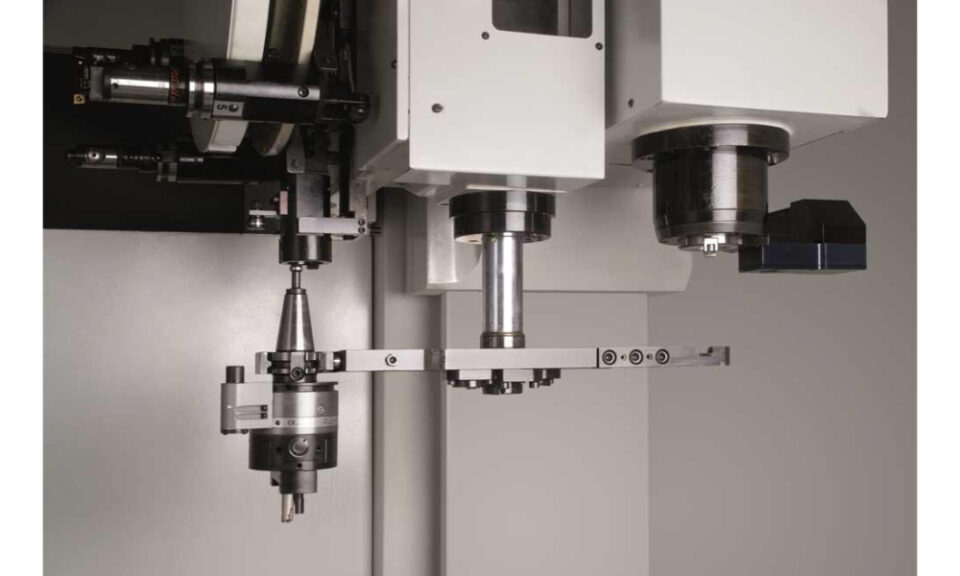In the world of CNC (Computer Numerical Control) machining, precision, efficiency, and versatility are paramount. As manufacturers and machinists strive to push the boundaries of their operations, the introduction of advanced equipment and tooling solutions can make all the difference. One such tool is the U-axis head, which offers significant benefits in enhancing the capabilities of CNC machines. This article explores how the U-axis head can unlock new potential in CNC operations, leading to more efficient, precise, and versatile machining processes.
Understanding the U-Axis Head
The U-axis head is a specialized component designed to extend the functionality of a CNC machine by adding a secondary axis of motion, often in conjunction with existing X, Y, Z, and sometimes A, B, or C axes. The U-axis typically refers to a rotation or positioning system that allows for more complex and precise machining of parts. In simple terms, it adds an additional degree of freedom for the tool or workpiece, enabling operations that would otherwise require multiple setups or specialized machines.
This additional axis provides rotational movement, typically around a horizontal or vertical axis, and allows CNC machines to execute operations that involve tilted or off-center geometries without repositioning the part. The u-axis head is particularly beneficial for multi-axis CNC machines, which are increasingly popular in industries requiring high precision and speed, such as aerospace, automotive, and medical device manufacturing.
The Benefits of the U-Axis Head in CNC Operations
1. Enhanced Precision and Accuracy
One of the main reasons for adopting the U-axis head is the enhanced precision it brings to machining processes. By introducing a fifth axis of motion, machinists can achieve more accurate results with fewer steps. This can be particularly useful in industries where even minor deviations from specifications can be costly, such as in the production of aerospace components or complex medical devices.
With the U-axis head, operators can machine parts that have previously been difficult or impossible to handle on traditional 3-axis machines. This allows for more complex geometries, such as angled surfaces or undercuts, to be produced with greater accuracy, reducing the need for secondary operations and minimizing the risk of errors.
2. Improved Efficiency and Reduced Setup Time
The U-axis head dramatically reduces the time spent repositioning workpieces and tooling. In conventional setups, machining complex parts may require several different machines or time-consuming repositioning between operations. The U-axis head allows operators to machine multiple sides or complex features of a workpiece in a single setup. This not only reduces the time required for setup but also minimizes the risk of errors caused by incorrect re-alignments or misplacements.
By improving operational efficiency, the U-axis head helps manufacturers achieve faster turnaround times, increased throughput, and ultimately, higher production rates. These improvements contribute to cost savings and enhanced competitiveness in the market.
3. Versatile Machining Capabilities
The versatility offered by the U-axis head is a game-changer for CNC operations. Traditionally, machining operations like drilling, milling, and turning could only be done on specific axes or at limited angles. However, with the U-axis head, machinists can perform a wider range of tasks such as multi-angle drilling, contour milling, and complex surface finishes with greater ease.
The additional rotation capability that the U-axis provides enables the machining of components from all angles, including difficult-to-reach features. This versatility is invaluable in the production of parts with intricate designs, ensuring that operations like undercutting or achieving a high level of surface finish are executed with precision.
4. Reduced Tool Wear and Extended Tool Life
A major challenge in machining operations is minimizing tool wear. Tools that have to engage in repetitive movements or are frequently repositioned tend to wear out faster. With the introduction of the U-axis head, CNC operators can make more efficient use of their tools, ensuring that they engage in more direct and precise movements. This not only improves the quality of the part but also contributes to longer tool life, as the tool is used more evenly and efficiently across its surface.
Applications of the U-Axis Head in CNC Machining
The U-axis head is commonly used in industries that require the precision of multi-axis CNC machining, such as:
- Aerospace: Components such as turbine blades, brackets, and engine parts benefit from the versatility of the U-axis head, which allows for more complex features to be machined in fewer setups.
- Automotive: Parts like suspension components, engine blocks, and drive shafts can be machined more efficiently with the help of the U-axis head, enabling a faster production cycle without compromising quality.
- Medical Devices: Precision medical devices such as implants or surgical tools require highly accurate machining. The U-axis head allows for fine-tuning in production without additional time-consuming setups.
Conclusion
Incorporating a U-axis head into your CNC operations can dramatically enhance the versatility, precision, and efficiency of your machining processes. From reducing setup times to improving the quality and accuracy of your parts, the U-axis head is a valuable tool that can significantly transform CNC operations. By adopting this advanced technology, manufacturers can streamline their production, optimize workflows, and stay ahead of the competition in industries demanding the highest standards of quality and innovation.

